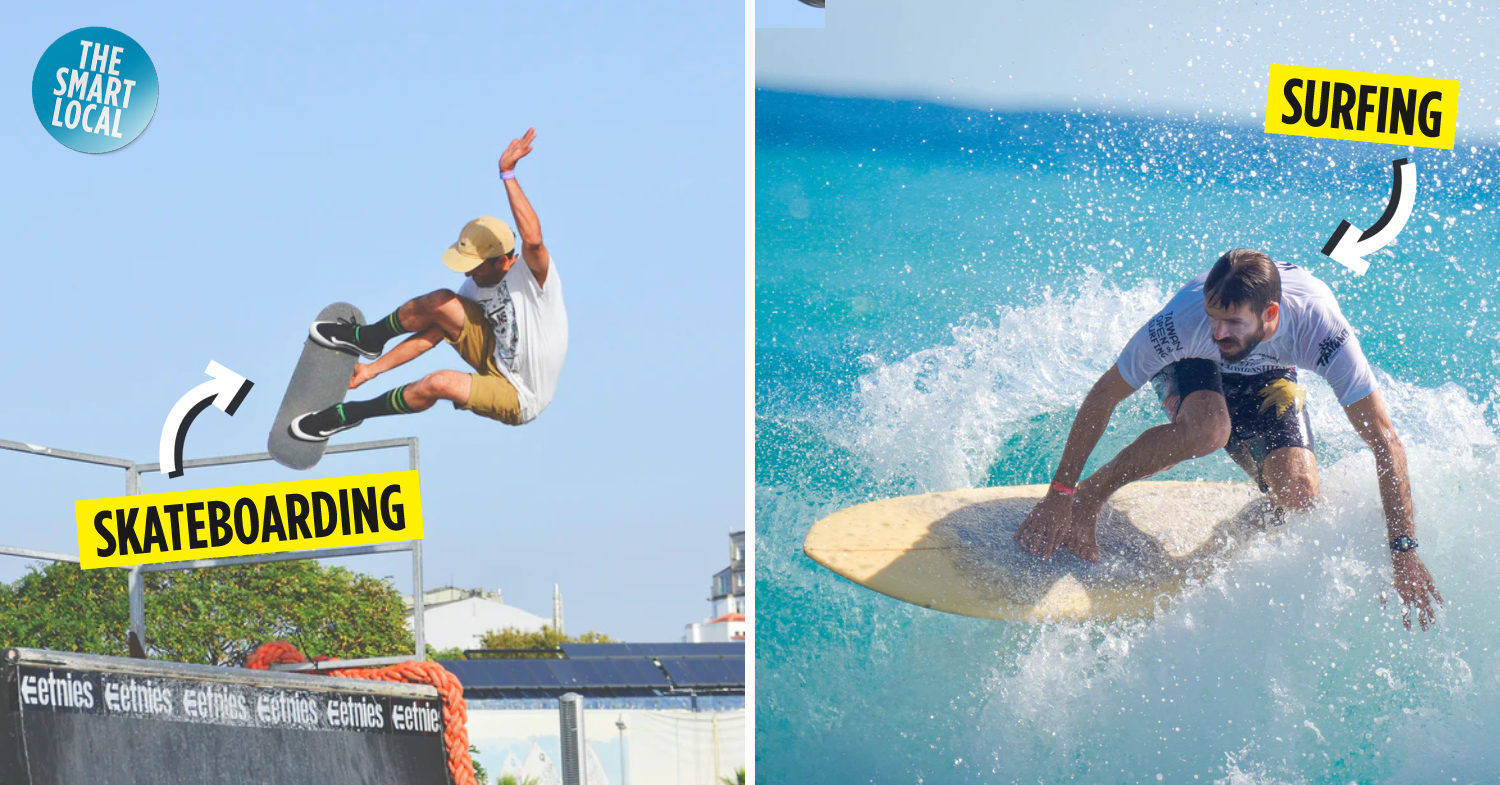New events at Tokyo Olympics
There will be 5 new events at the 2021 Tokyo Olympics, which starts on 23rd July. Learn more about their rules and how the winners will be determined for each sport so that you won’t feel lost when watching the livestream this summer.
1. Surfing
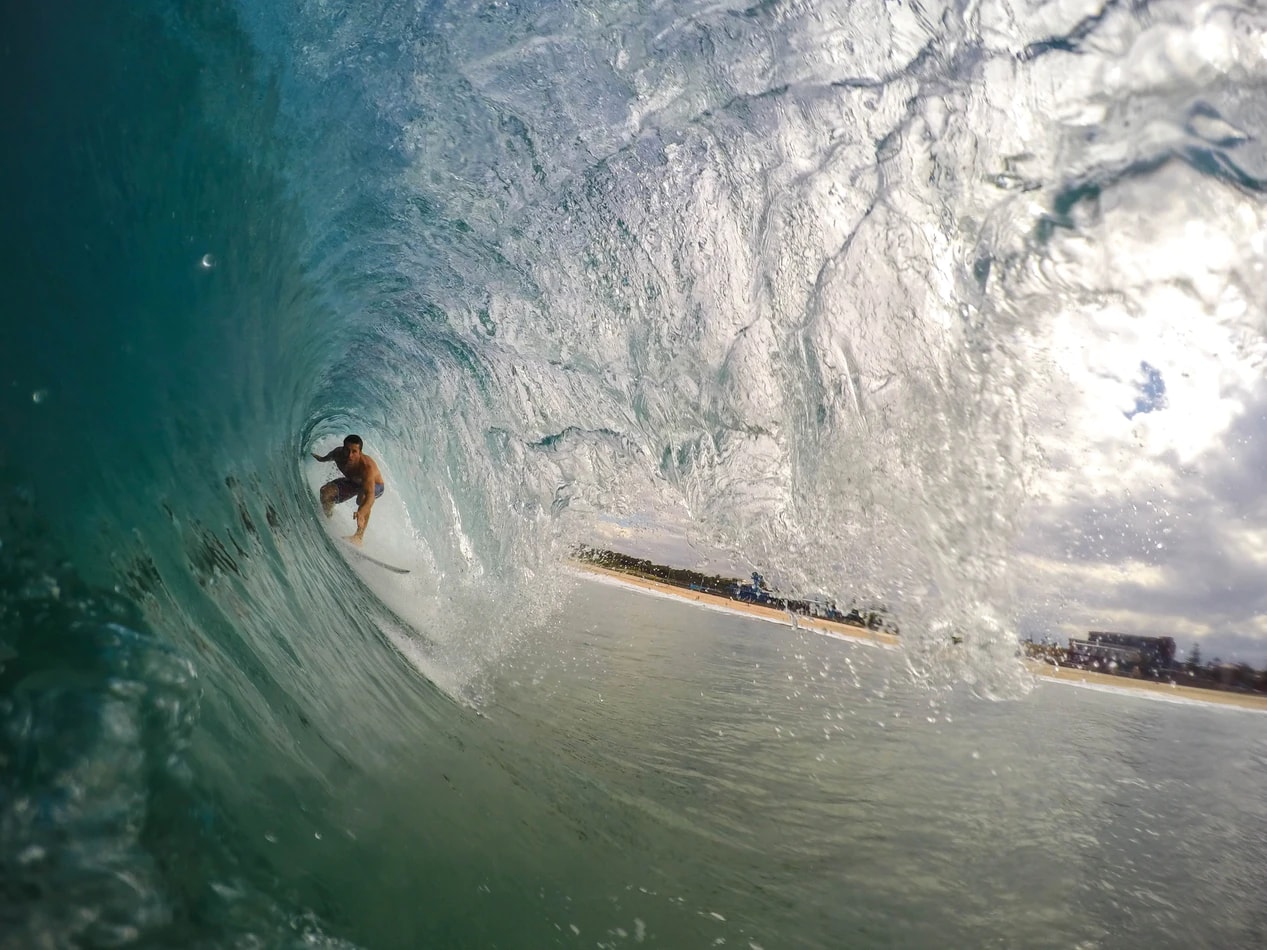
Image credit: Jeremy Bishop
Location: Tsurigasaki Beach
Surfing is essentially riding waves on a board. The sport was likely invented by the ancient Polynesians. Duke Kahanamoku, a Hawaiian Olympic swimmer born in 1890, then popularised the sport during and after his professional career by holding surfing exhibitions. He also advocated for surfing to be added to the Games during the 1912 Summer Olympics.
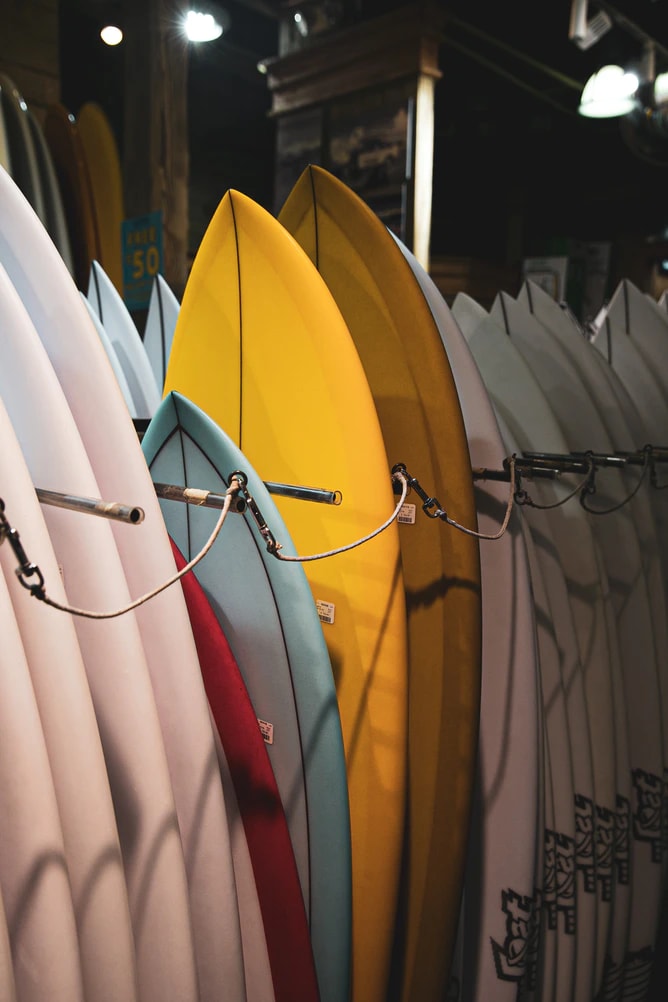
Image credit: LOGAN WEAVER
There are 2 types of boards in surfing – the 2.7m-long longboard and the 1.8m-long shortboard. The shortboards are more suitable for performing stunts. At the Tokyo Olympics, the competition will involve 20 male and 20 female surfers competing to perform stunts to score points on shortboards.
The competition begins with Round 1, in which 4 athletes will be competing per heat. The top 2 surfers will advance to Round 3. Meanwhile, the bottom 2 surfers across the 5 heats will compete in Round 2.
In Round 2, the 10 surfers are split into 2 heats. The top 3 of each heat will move on to Round 3, while the remaining 4 surfers will be eliminated.
In Round 3, the competition becomes 1v1. The higher-seeded players play against the lower-seeded players. A player is seeded according to their performance during past competitions leading up to the Olympics, as well as their performance during Round 1 and 2.
The winners of each showdown will then move on to the quarter-finals, semi-finals, and finals, where they compete 1v1.
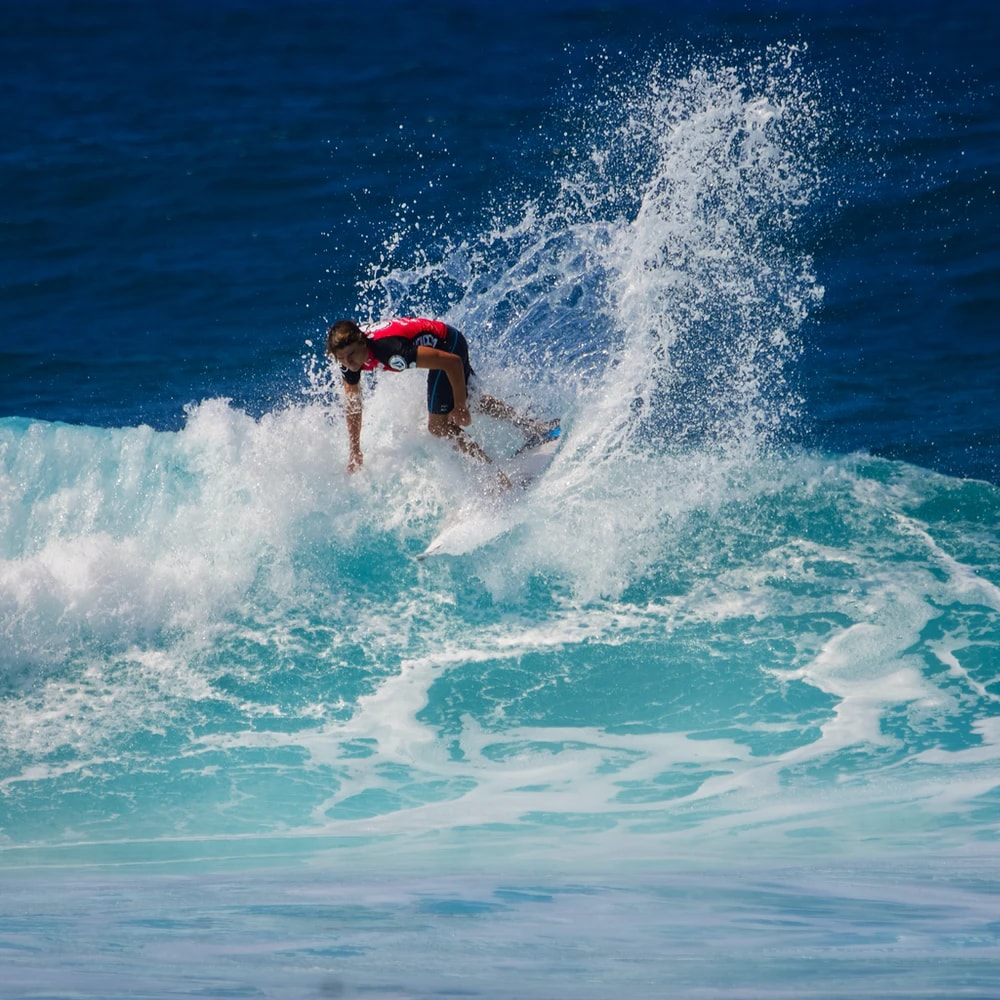
Image credit: Thomas Ashlock
During each round, all competing surfers will be out in the ocean concurrently, executing tricks alongside other surfers. Each athlete is allowed to ride a maximum of 25 waves and perform tricks within 30 minutes. Each wave will be scored from 1-5 points, depending on factors such as the difficulty, variety of moves showcased, and overall speed.
However, only the scores of the 2 highest-scoring waves will be considered for the athletes’ final score. This means that quality is more important than quantity.
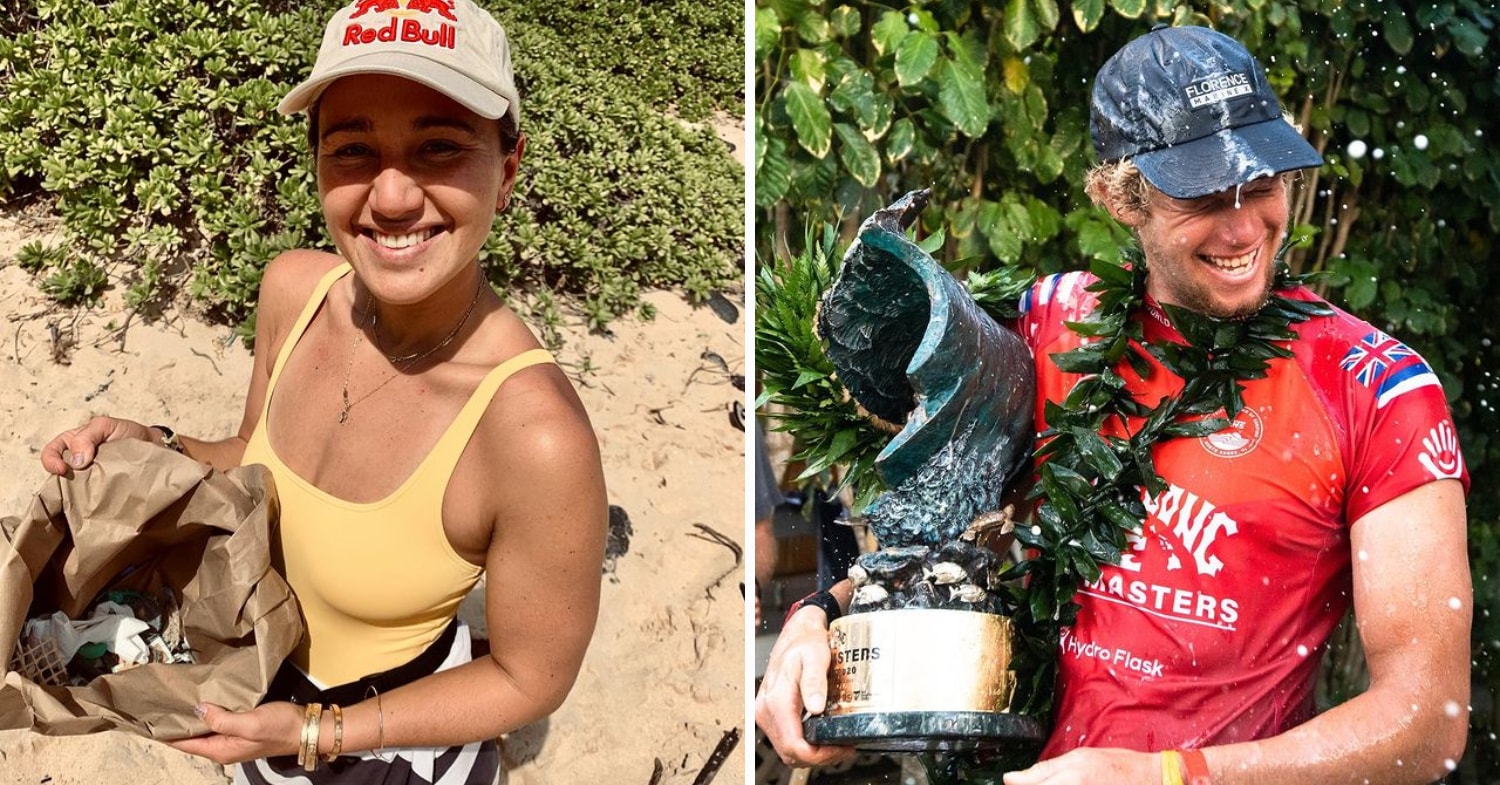
Carissa Moore and John John Florence
Image adapted from: @rissmoore10 and @john_john_florence
Top surfers from the professional surfing scene will be participating in the Olympics. Look out for the 2-time world champion John John Florence and 4-time world champion Carissa Moore. Both athletes are representing America.
See the official competition schedule here.
2. Karate
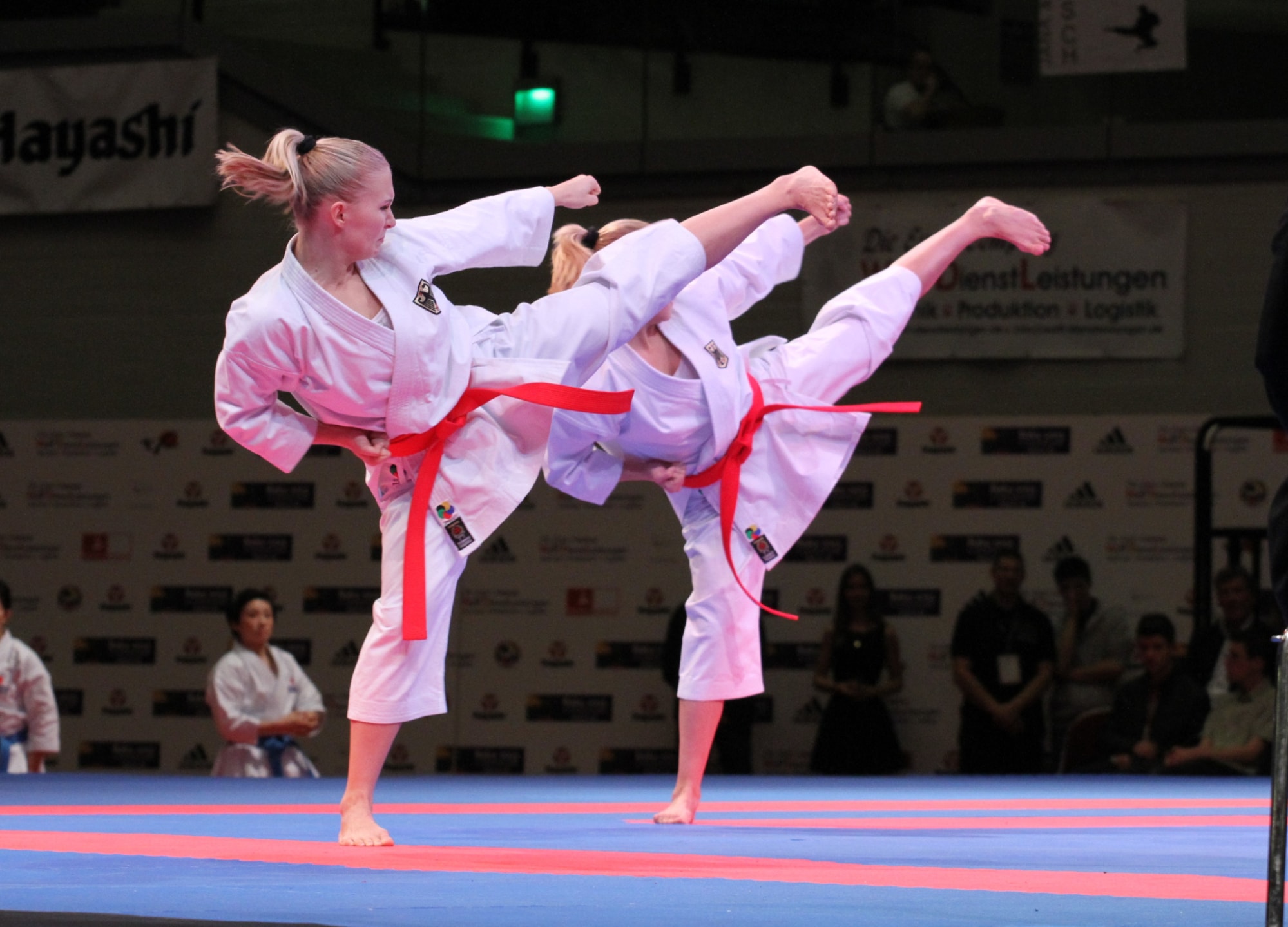
Image credit: Wikimedia Commons
Location: Nippon Budokan
Karate (空手; bare hands) is a traditional form of Japanese martial arts. Modern karate was formalised in the 17th century by a devoted practitioner named Gichin Funakoshi, who lived in Okinawa. For the Olympics, there will be 2 types of competitions for karate – kata and kumite.
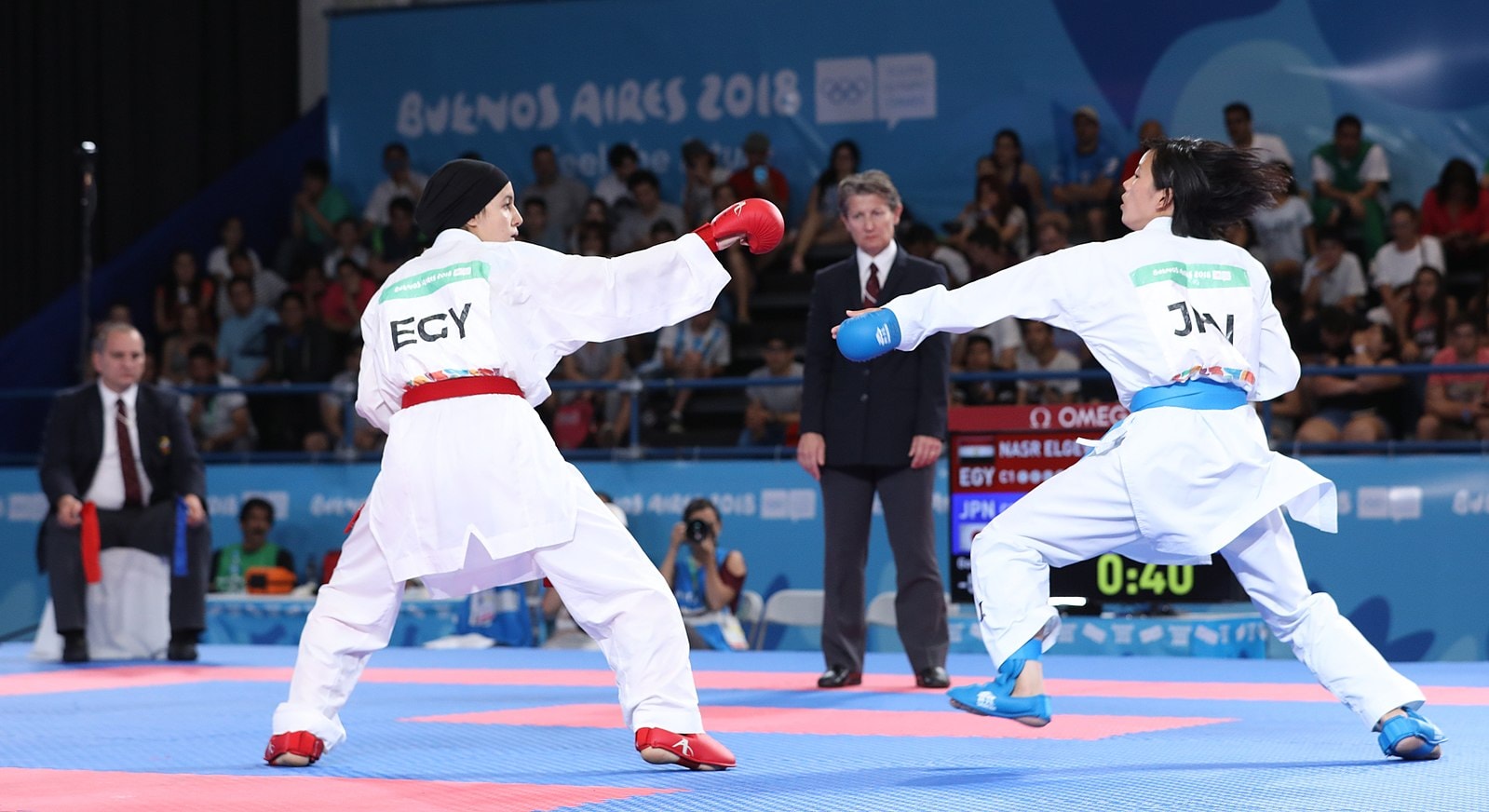
Image credit: Wikimedia Commons
Kumite is a 3-minute showdown between 2 athletes in a 8m x 8m arena. Each athlete will try to land kicks and punches to specific areas such as the neck, shoulder, back, and head of the other athlete. Each successful blow landed is worth 1-3 points.
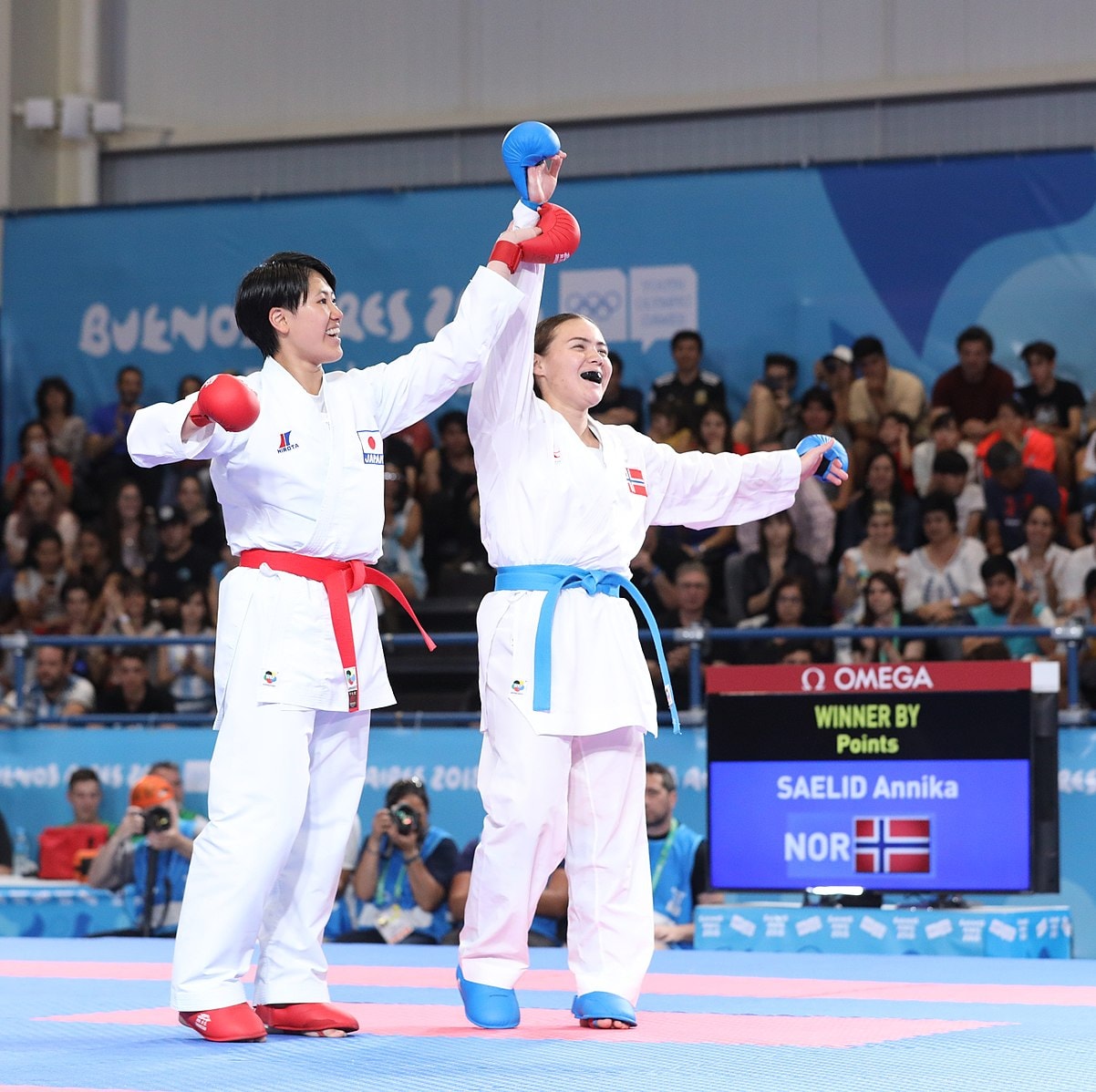
Image credit: Wikimedia Commons
An athlete wins by either gaining more points than their opponent at the end of 3 minutes, or by having a score difference of more than 8 points during the showdown. If there’s a tie, the athlete who scored the 1st point in the match wins. If neither athlete scores, the winner is determined by the judges.
Athletes can only compete in 1 of the 3 weight categories available for their gender.
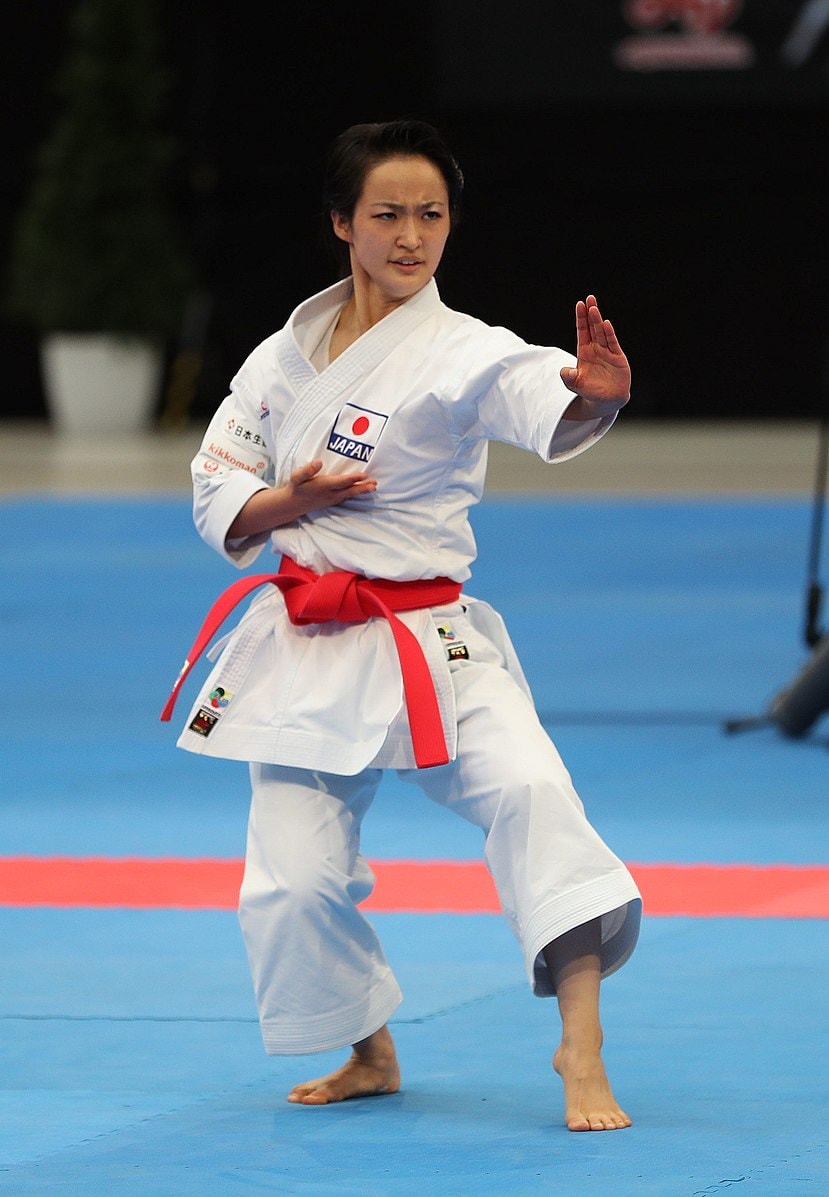
Image credit: Wikimedia Commons
Kata is a performance sport. The athlete stands alone in the arena and performs a series of moves – comprising various kicks, punches, and poses – to earn points. Each series of moves is called a “kata”. The official federation recognises 102 kata.
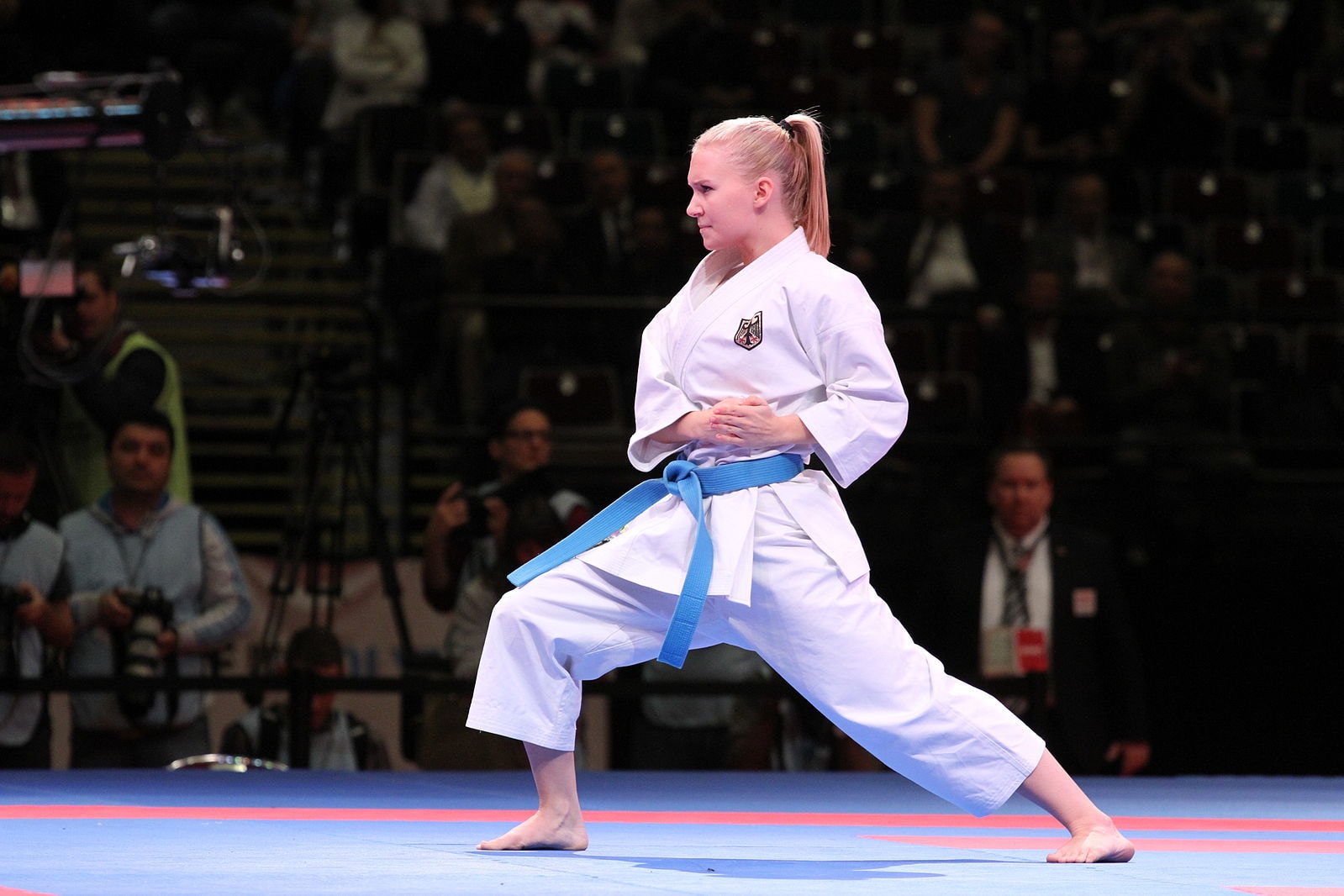
Image credit: Wikimedia Commons
There are 7 judges for the competition. Each kata performed is given a technical score and an athletic score. Technical scores are given based on how well the athlete executes the chosen kata, while athletic score boils down to the overall speed, strength, and balance displayed.
The technical and athletic scores are given on a scale of 5.0-10.0, with the score interval being 0.2. The 2 highest and lowest technical and athletic scores from the judges are disregarded, and the remaining scores are then added up.
Finally, the combined score is recalculated to yield the athlete’s final score. The recalculation involves changing the weighing of the technical and athletic scores to 70% and 30% respectively.
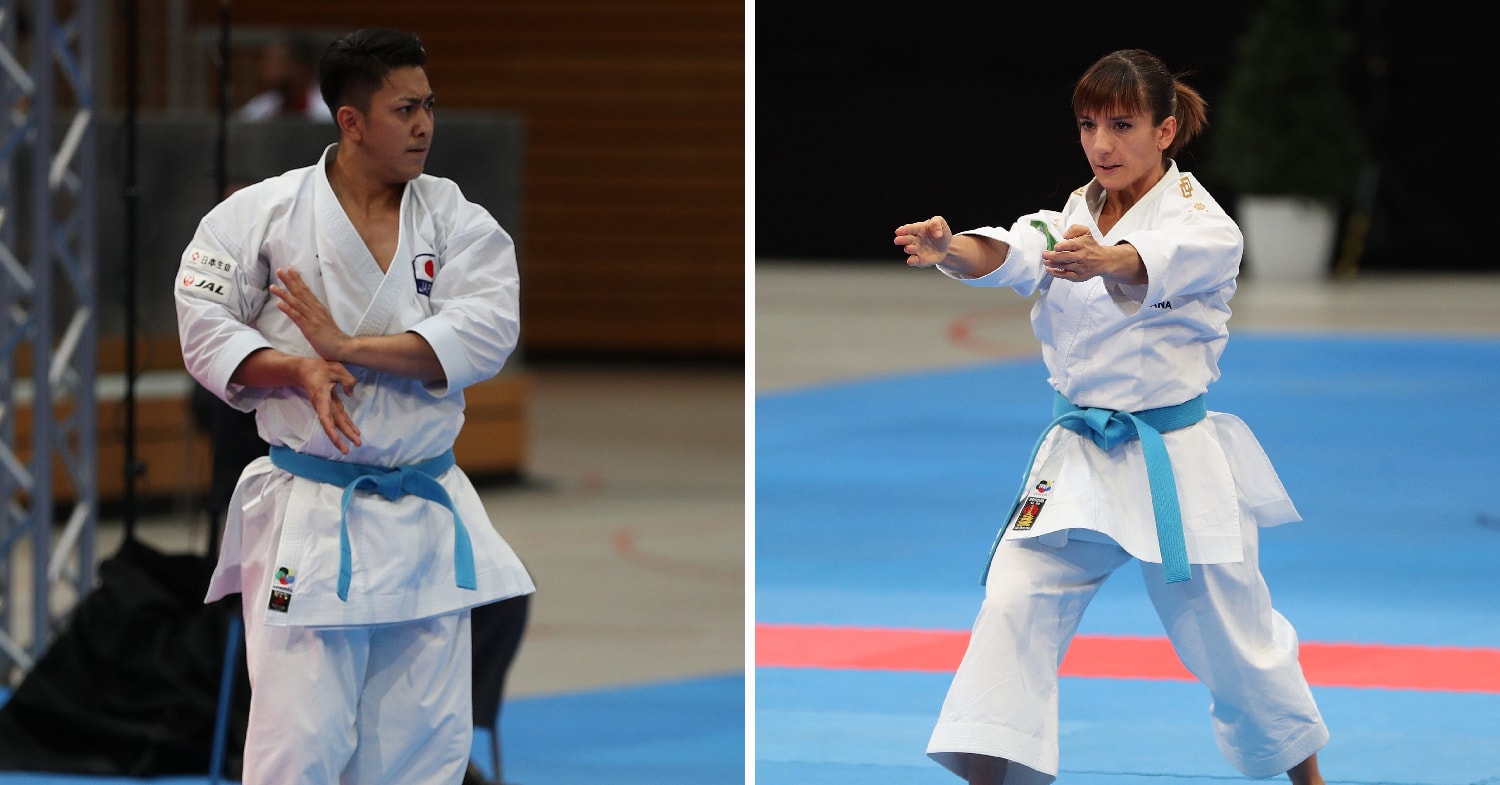
Kiyuna Ryo and Sandra Sanchez
Image credit: Wikimedia Commons and Wikimedia Commons
As the most decorated Kata athlete to date, Spain’s Sandra Sanchez is a hot-favourite for the ladies’ event. For the men’s event, the gold medal favourite is Japan’s Kiyuna Ryo. He’s a 3-time world champion.
See the official competition schedule here.
3. Skateboarding
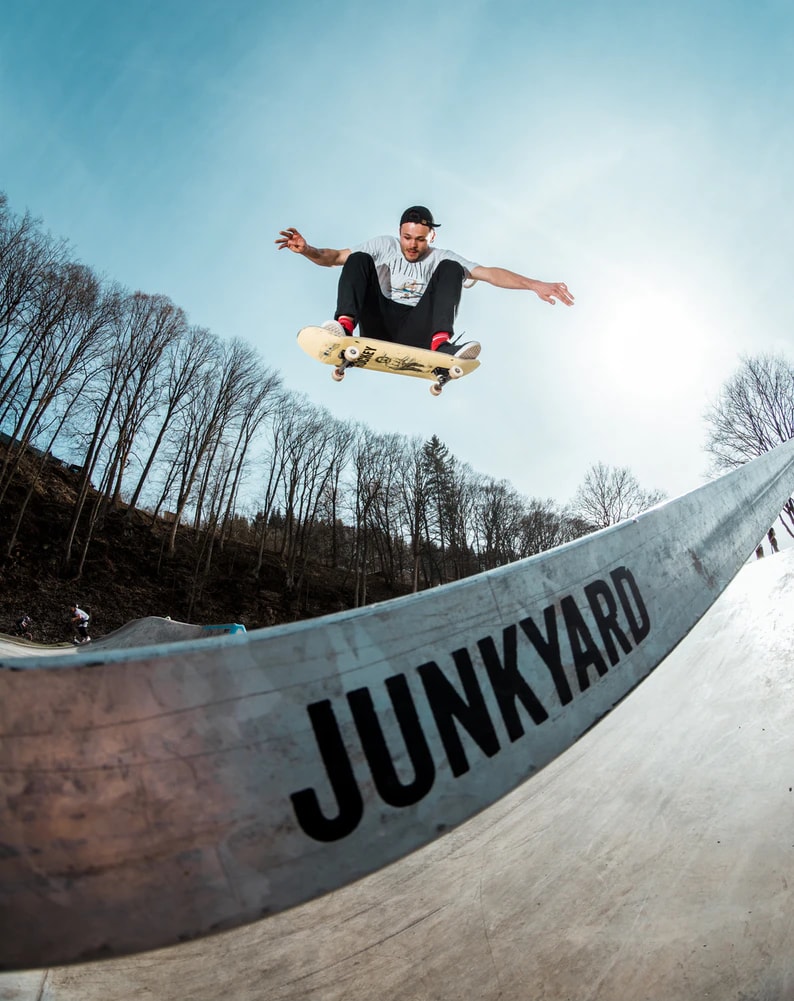
Image credit: Jan Kopřiva
Location: Ariake Urban Sports Park
Skateboarding’s popularity took off in the early 1960s when companies saw surfing’s surging popularity as a great opportunity to generate interest in skateboarding. They popularised the land sport amongst surfers by branding it as “sidewalk surfing” – an alternative to try out when the waves were too flat to ride.
The sport’s popularity fluctuated greatly after that due to safety concerns. Nevertheless, skateboarding eventually found its footing as a thrilling and competitive sport involving landing complicated tricks.
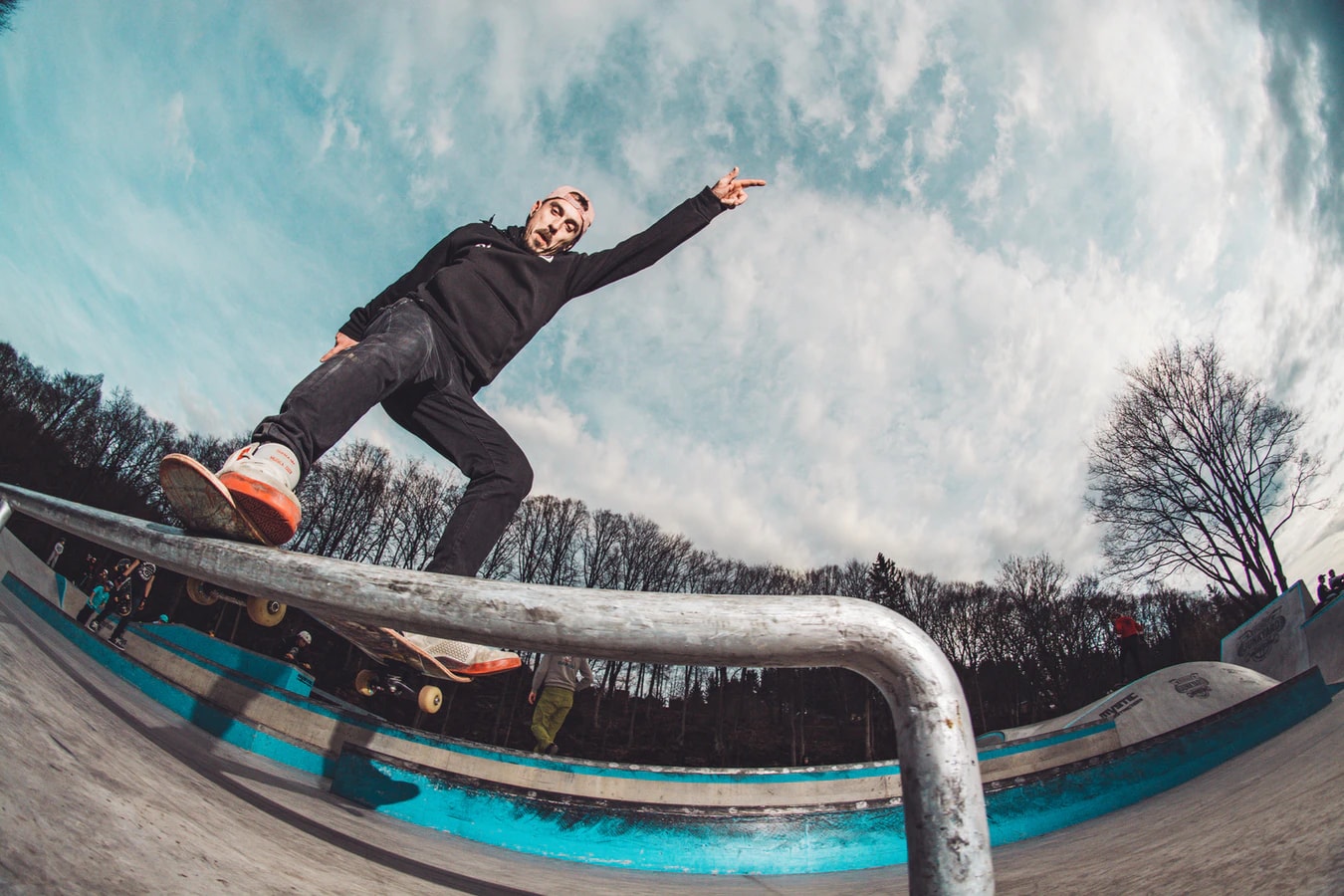
Image credit: Jan Kopřiva
The Tokyo Olympics will feature 2 types of competition. The first takes place at the “park” terrain, while the second takes place at the “street” terrain. The scoring format varies between the 2 competitions.
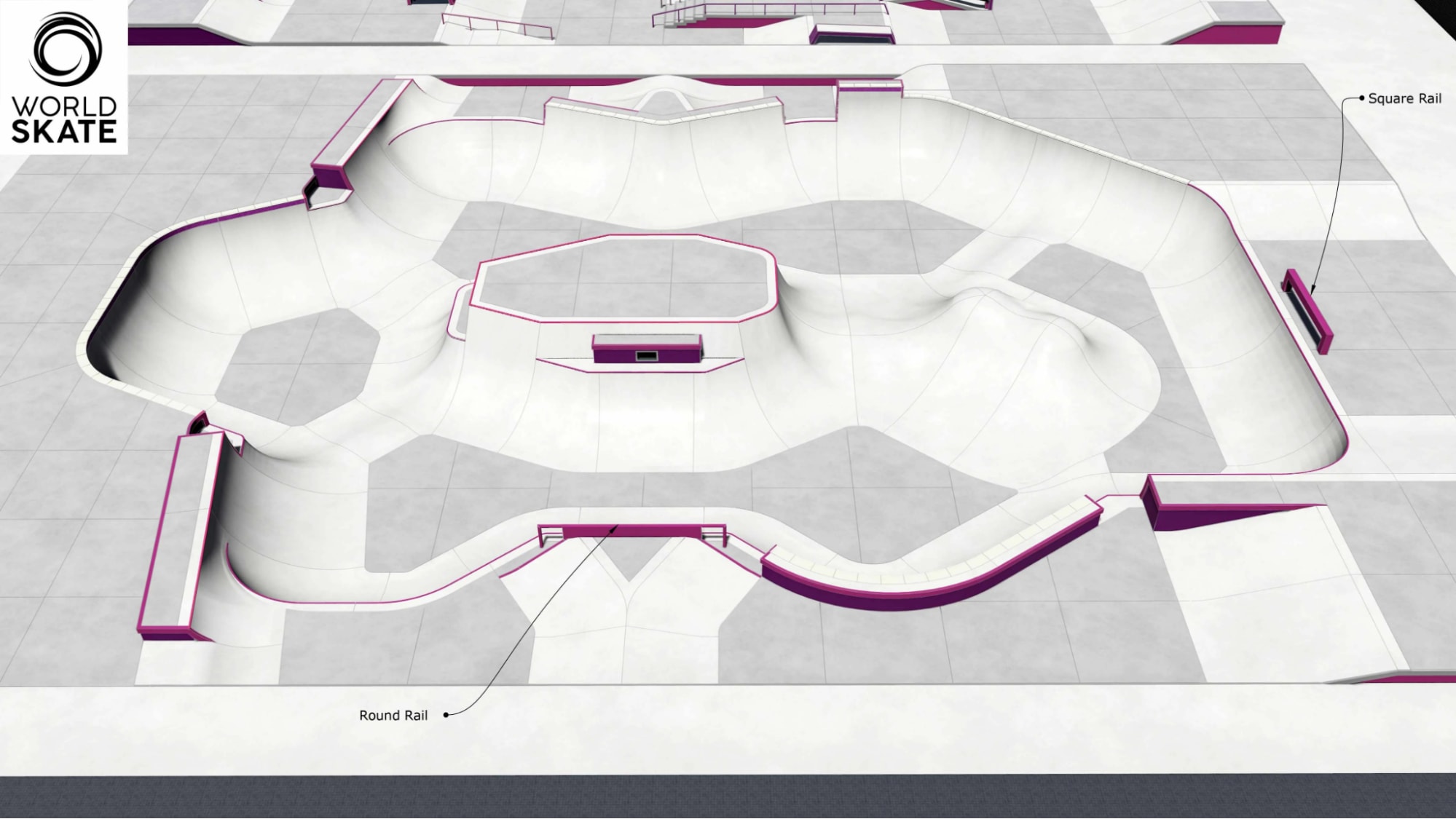
Venue layout for the park competition
Image credit: Olympics
The park competition will consist of 20 skaters. Skaters will be divided equally into 4 heats. During the heats, the skater will be given 3 tries to showcase a 45-second run.
For every try, 5 judges will give individual scores from 0-100.00. The average of the 3 middle scores, rounded to 2 decimal places, becomes the result for that run.
For example, if an athlete receives the scores 86.45, 88.30, 87.84, 86.93, and 87.24 from the judges, the scores 88.30 and 86.45 will be disregarded. Then, by averaging the remaining scores and rounding the number to 2 decimal places, we get the athlete’s result for the run – 87.34.
The highest result amongst the 3 runs will be taken as the athlete’s final score. Based on this score, the top 8 from the heats will advance to the finals. The same format will be used to determine the final rankings.
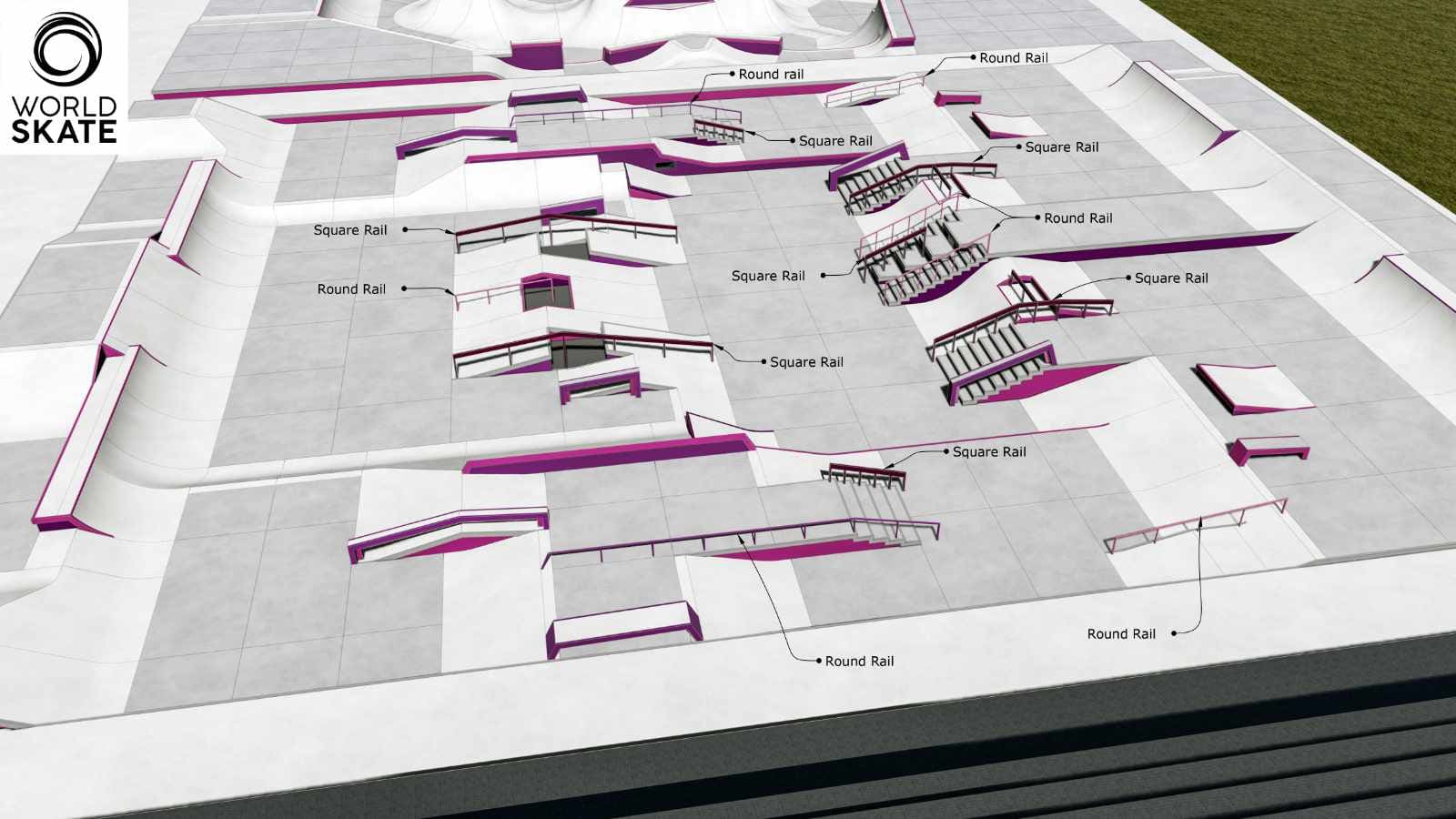
Venue layout for the street competition
Image credit: Olympics
The street competition will also have 20 skaters.
Skaters will be divided equally into 4 heats. Each skater needs to perform 2 45-second runs and 5 tricks. 5 judges will score each run or trick from 0-10.0. The tricks and runs are judged based on many factors, including difficulty, originality, flow, and speed.
The average of the middle 3 scores, rounded to 1 decimal place, will become the contestant’s score for that run or trick.
At the end, the athlete’s final score will be the total of the highest 4 scores received out of all the tricks and runs executed. The top 8 from the heats will advance to the finals. The same format will be used to determine the final rankings.

Nyjah Huston and Leticia Bufoni
Image adapted from: @nyjah and @leticiabufoni
The gold medal contenders for the 2 competitions in the men’s and women’s categories are USA’s Nyjah Huston and Brazil’s Leticia Bufoni. Huston holds multiple gold medals from professional competitions, including a world title at the 2017 Super Crown World Championship. Meanwhile, Bufoni won the popular extreme sports event X Games 5 times.
See the official competition schedule here.
4. Sport Climbing
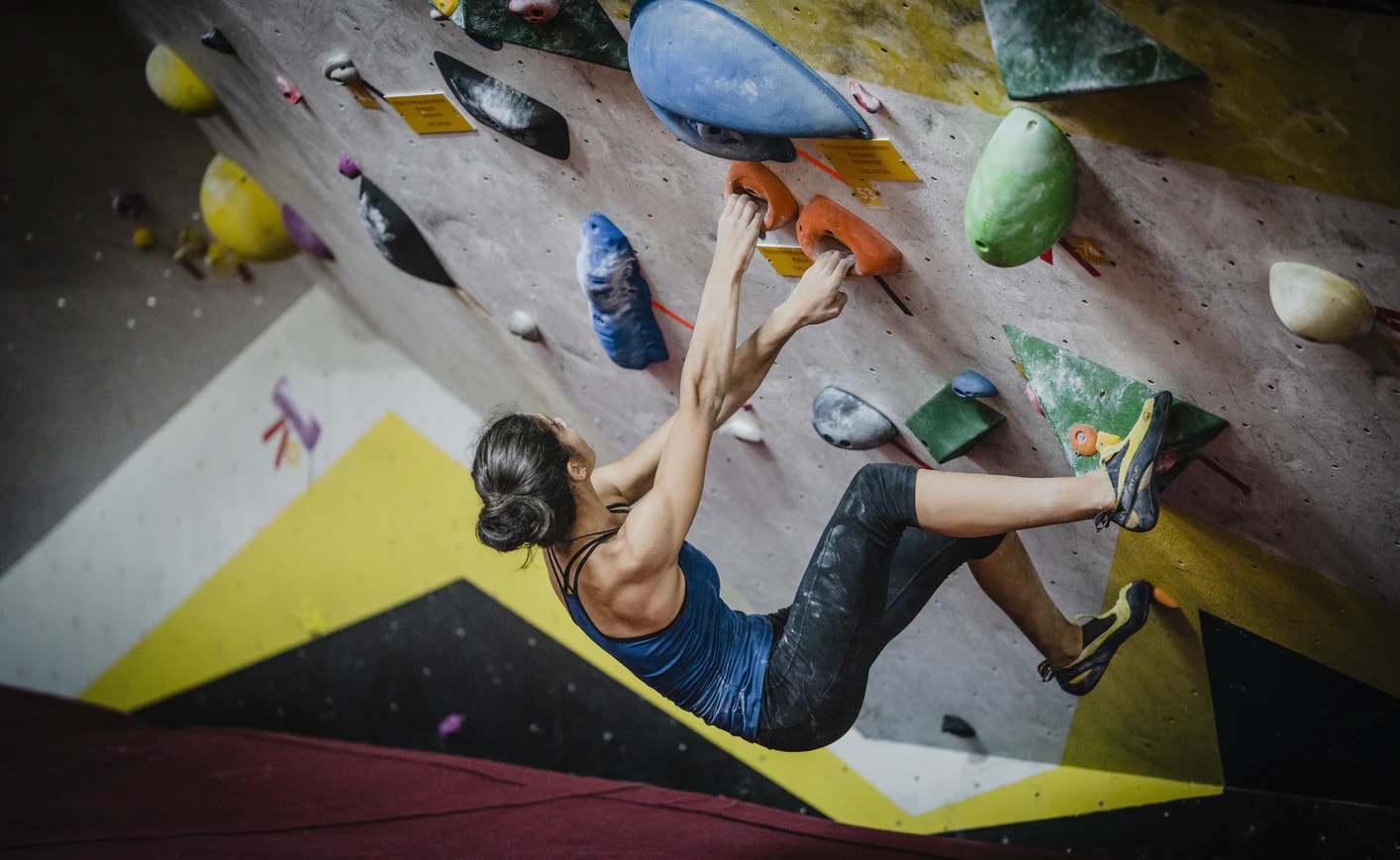
Image credit: yns plt
Location: Aomi Urban Sports Park
Sport climbing features athletes competing to climb up a wall that has fixed pebble-like anchors. The sport is broken down to 3 types of climbing – lead, speed, and bouldering. For Olympic sport climbing, 20 male and 20 female athletes will have to compete in all 3 types of climbing.
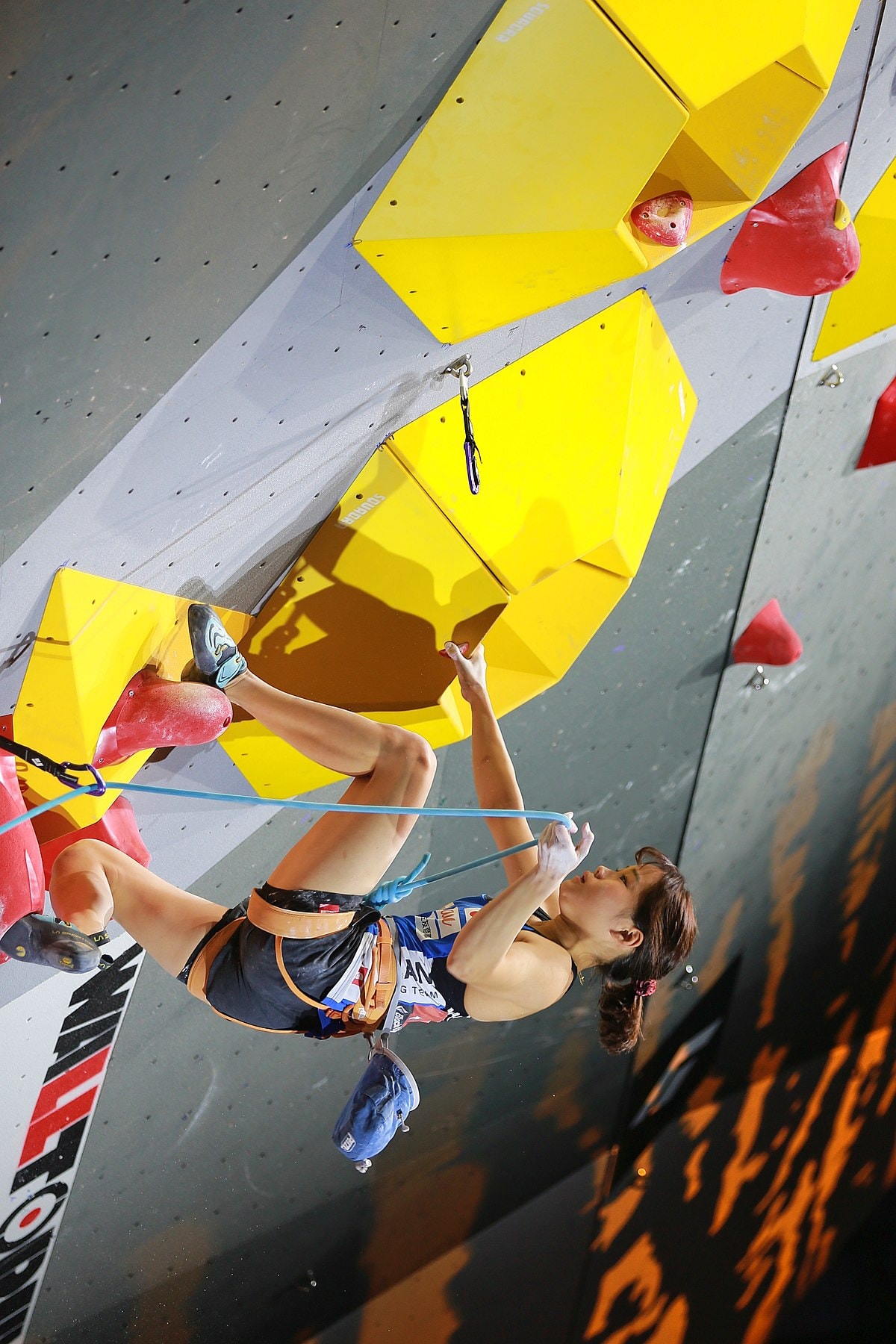
Image credit: Wikimedia Commons
In lead competitions, each climber will try to scale a 15m-tall wall within 6 minutes, going one at a time. For climbers who do not manage to reach the peak, the ranking is determined by the greatest height they have reached. For climbers who manage to scale the wall, the ranking is determined by the time taken.
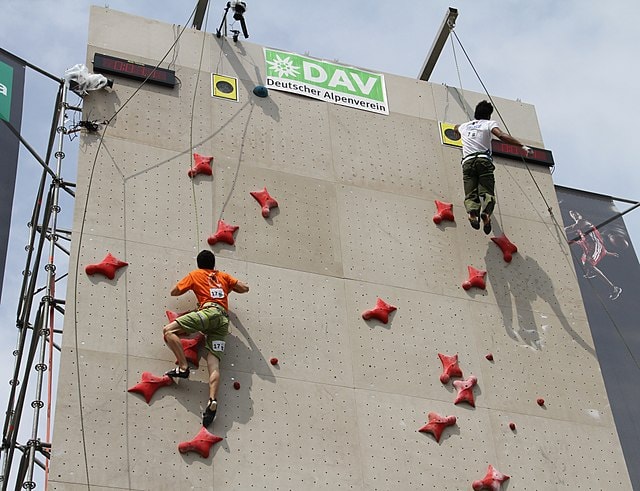
Image credit: Wikimedia Commons
For speed competitions, 2 climbers attempt to scale a 15m wall, inclined at 95°, as fast as possible. The climber with a shorter timing prevails.
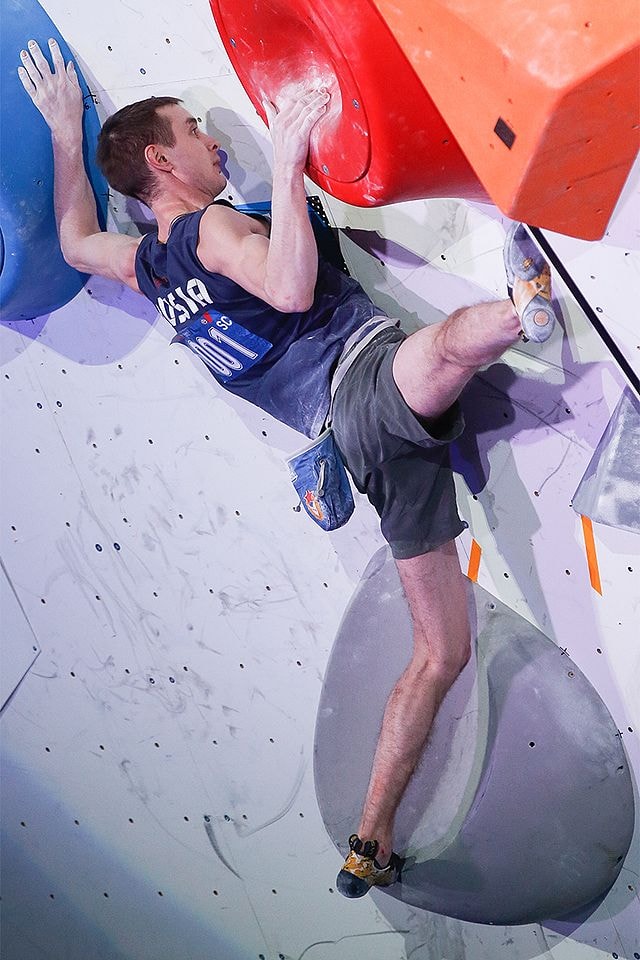
Image credit: Wikimedia Commons
Bouldering is a little different – unlike the other 2 events, no safety harnesses are allowed in bouldering. Climbers are given various 4.5m walls and tasked to figure out how to scale them. The winner is the one who manages to scale the most number of walls within 4 minutes.
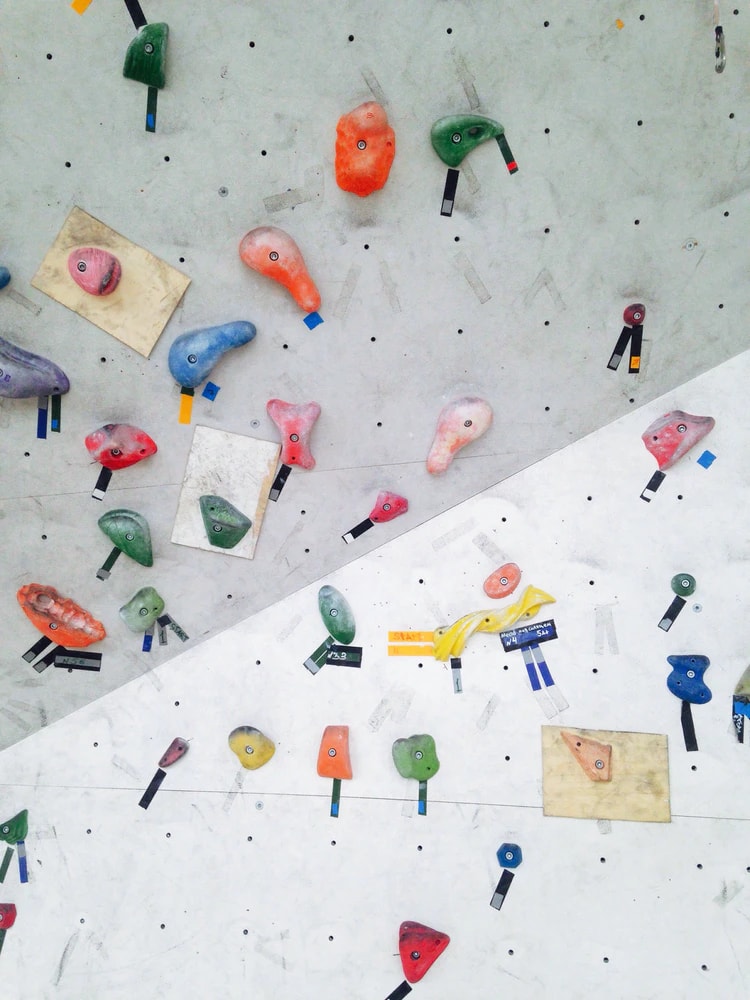
Image credit: David Pisnoy
For each event, winning 1st place will yield 1 point, while 2nd place will yield 2 points, and so on. The gold medalist is the one with the lowest combined points across the 3 events.
The climbers who have qualified for the Olympics have their own specialisations amongst the 3 events, thus it would be interesting to see which climber is the most well-rounded at the Games. View the start list on the International Federation of Sport Climbing website and make your guesses.
See the official competition schedule here.
5. Baseball and softball

Image credit: Wikimedia Commons
Location: Fukushima Azuma Baseball Stadium & Yokohama Baseball Stadium
Baseball is a strategic men’s team sport. In Japan, the sport is known as 野球 (yakyu), and it’s immensely popular.
A baseball match is played between 2 9-player teams on a field with 3 bases – 1st, 2nd, 3rd – and the home plate. The bases and home plate are arranged in a diamond or square fashion. A total of 9 rounds – formally called “innings” – will be played to determine the winning team.
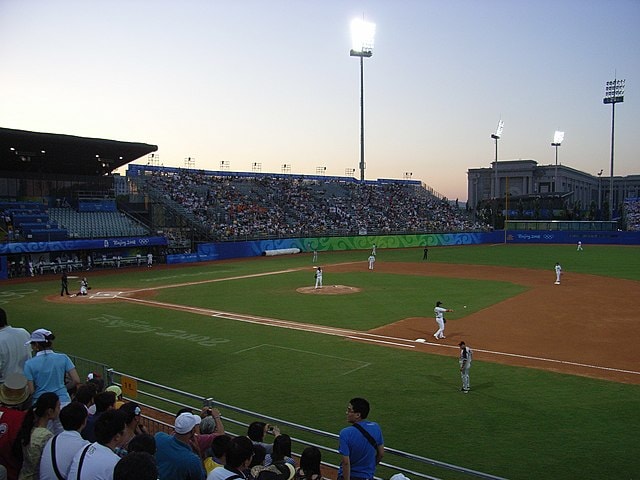
Image credit: Wikimedia Commons
Before an inning begins, 1 team will send out 3 players to be situated at the 1st, 2nd, and 3rd base, 3 players to be at the grassy patch furthest from the home plate, and 1 player to be between the 2nd and 3rd base.
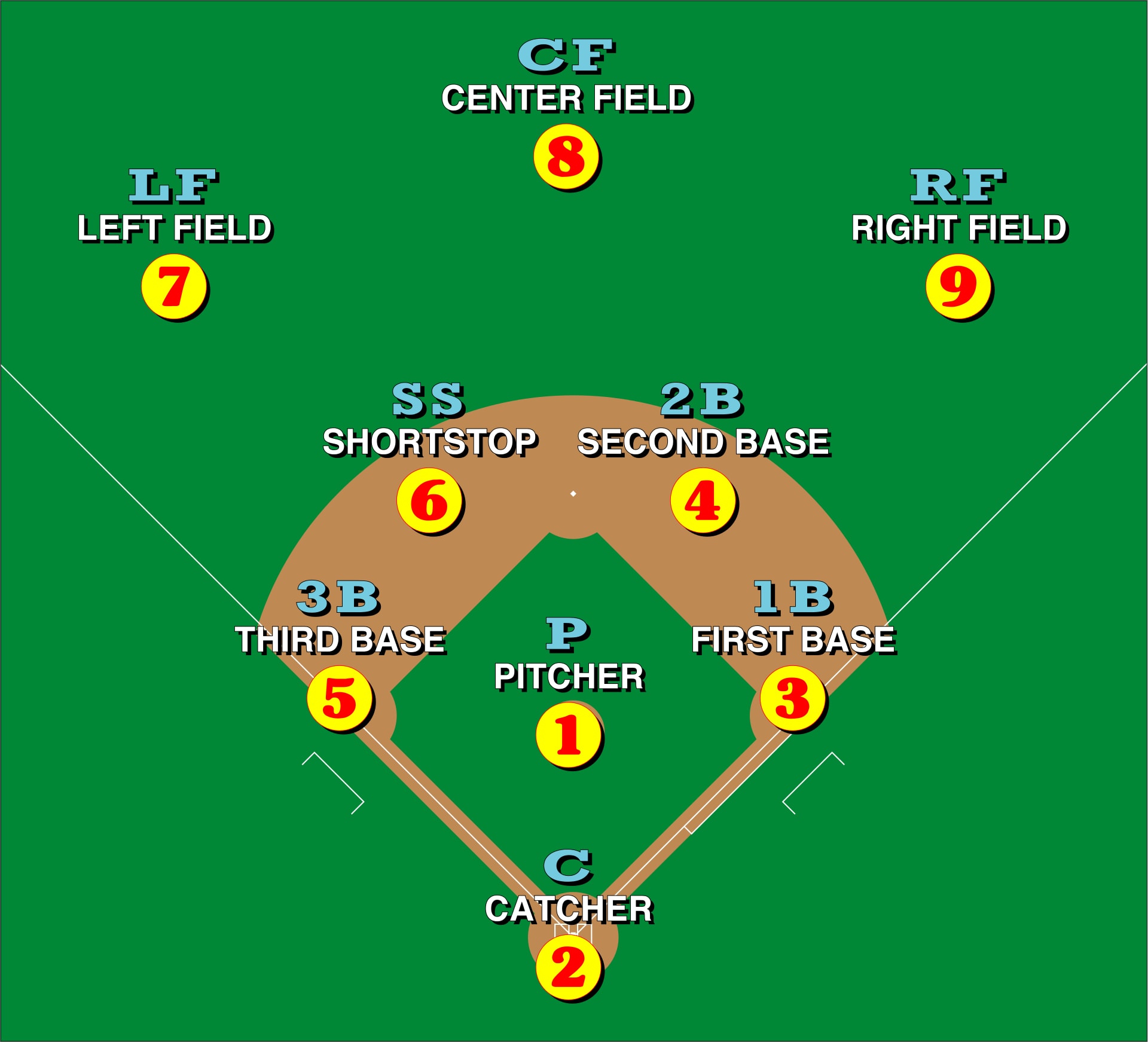
Image credit: Wikimedia Commons
The same team will also send out 1 pitcher – a player who throws the ball to the opponent – and a catcher – someone responsible for catching the thrown ball.
The opposing team will send out 1 player to be the batter.
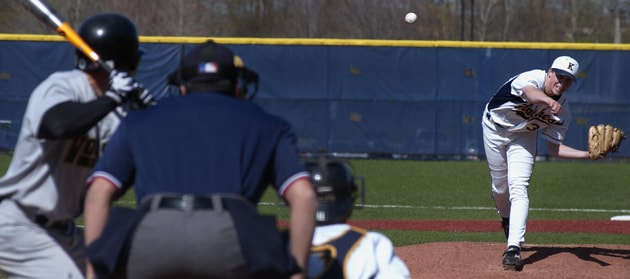
Image credit: Wikimedia Commons
When the inning begins, the pitcher will first throw the ball, and the opponent batter standing beside the home plate will try to hit it within the strike zone. The strike zone is the area above the home plate, between the batter’s knees and chest. If the batter does not hit the ball within this area, it is considered a “strike”. Once the batter gets 3 strikes, he is out.
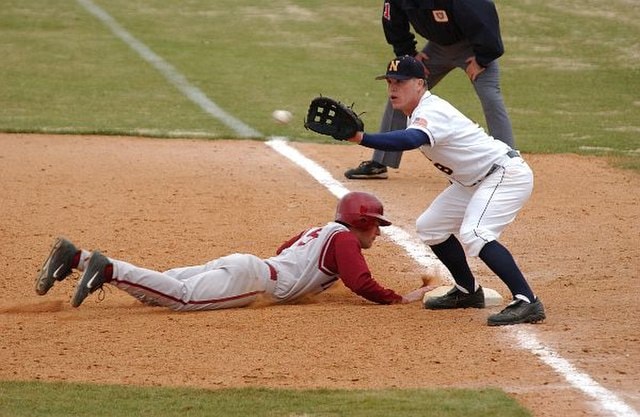
Image credit: Wikimedia Commons
If the ball is successfully hit, the batter becomes a runner. His role now is to run to 1st, 2nd, and 3rd base, then finally return to the home plate. If he does so without being outed, he scores a point – formally called a “run” – for the team.
When an opponent team’s player manages to grab hold of the ball and steps on the base that the runner is running towards, the runner is out. The runner is also out when an opponent taps him with the ball while he’s making his run towards a base.
The runner can choose to stop at the 1st, 2nd, or 3rd base if he thinks that he may be outed if continued to the next base. The runner’s team will then send out the next batter to bat. When the ball is hit, the batter becomes a runner, while the runner already on the field continues to advance through the bases.
This process repeats until 3 outs occur in total. Afterwards, the 2 teams switch positions. This time, the other team will try to score runs. An inning concludes when both teams have had their go. This entire format then repeats for 8 more innings.
The team that has a higher number of runs after 9 innings wins.
The Games will follow a tournament format as follows.
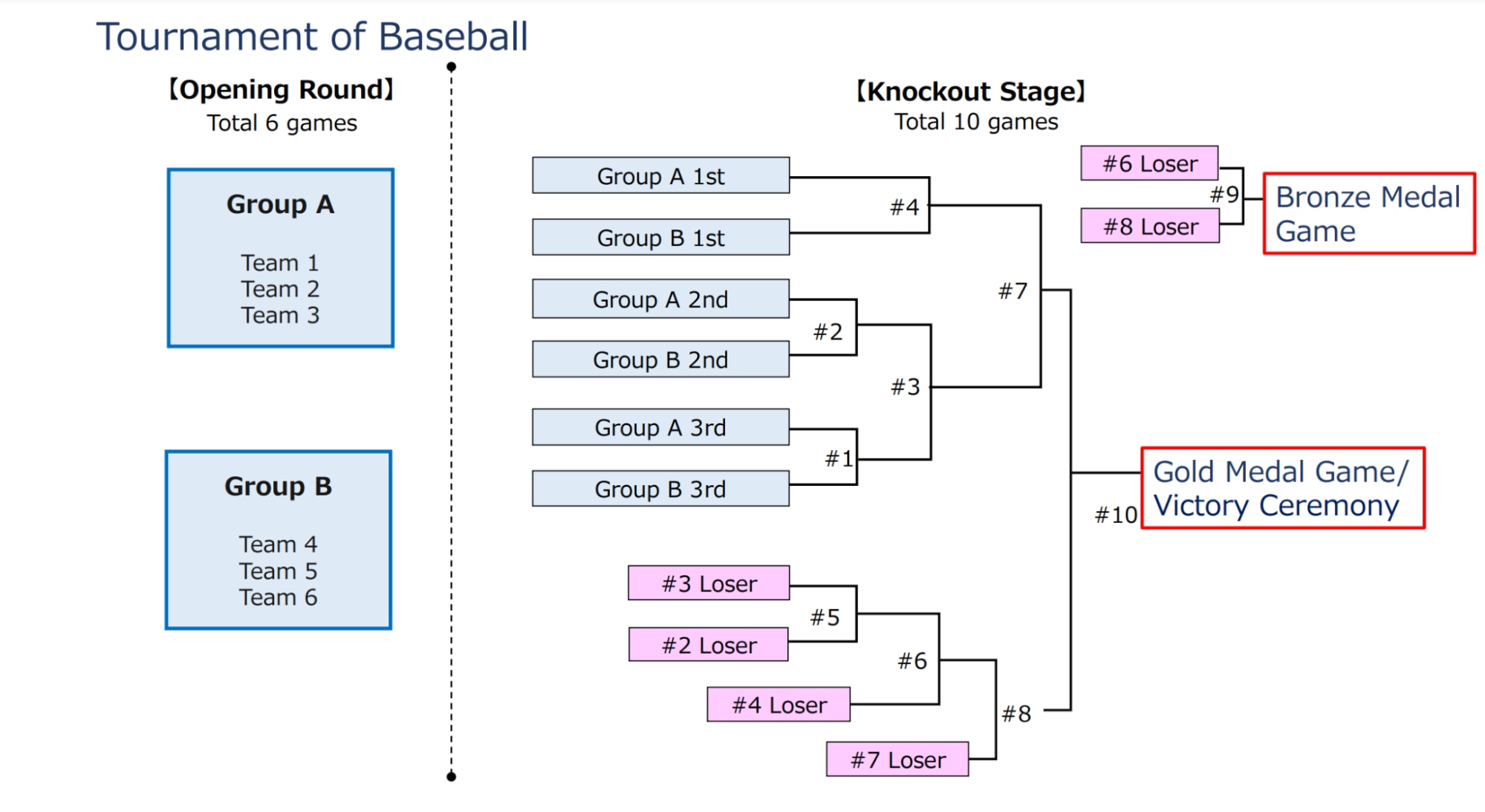
Official visual provided by the Olympics
Image credit: Olympics
There will be 6 countries competing at the Olympics men’s baseball event. They are Israel, Japan, Mexico, South Korea, USA, and Dominican Republic.
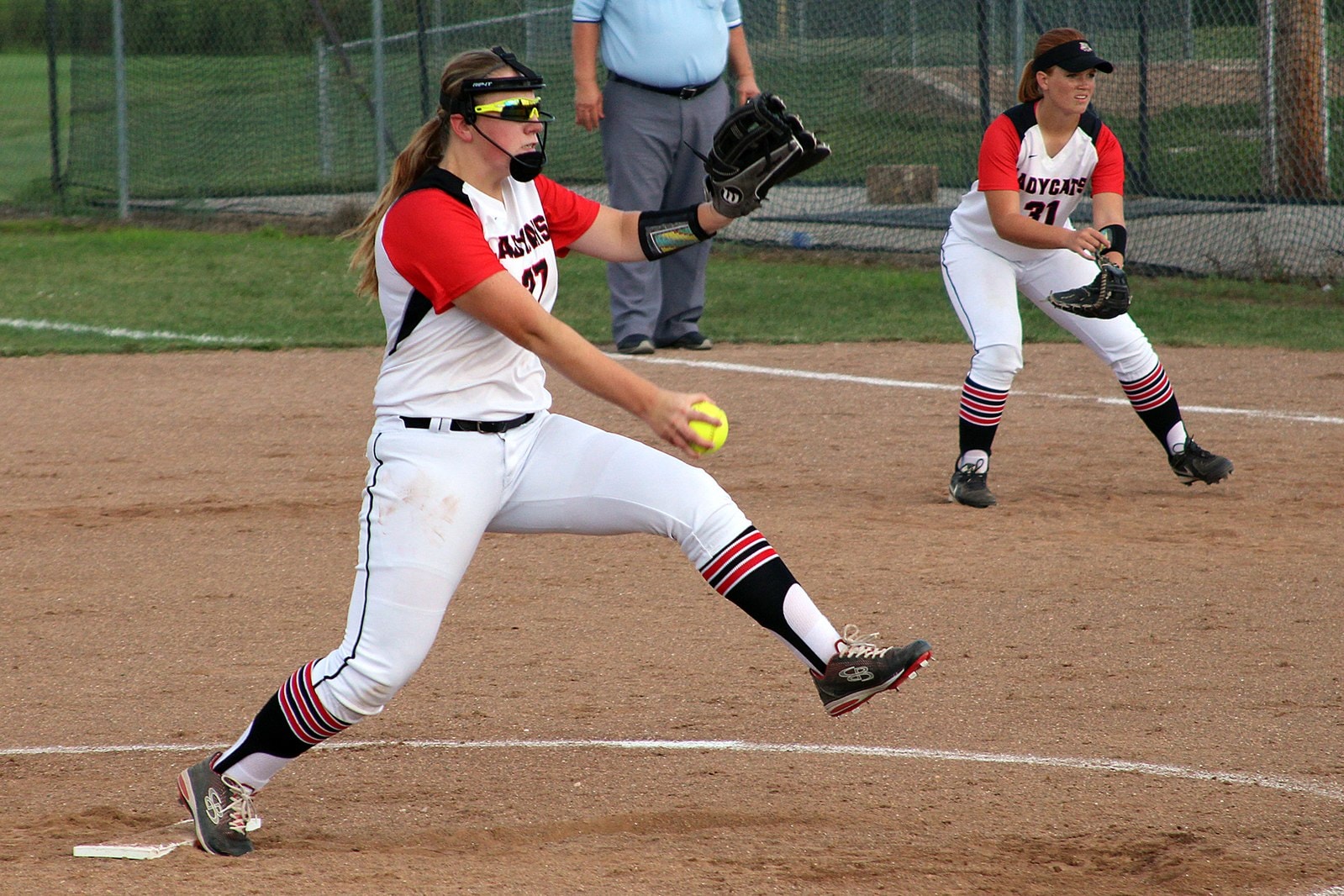
Image credit: Wikimedia Commons
The women’s softball event will also be featured in the Tokyo Olympics. Softball is similar to baseball in terms of rules, but differs in terms of techniques, playing field, and equipment. For example, softball pitches are always underhand, while baseball pitches generally use overhand throws. In addition, softball games only feature 7 innings.
Japan, Italy, USA, Australia, Canada, and Mexico will be competing at the softball event. In the opening round, each team will compete against the other 5 teams. The number of wins and losses will determine their rankings. The top 2 teams then play for the gold medal, while the teams ranked 3rd and 4th will play for the bronze medal.

Yokohama Baseball Stadium
Image credit: Wikimedia Commons
You can find the official competition schedule for baseball and softball here. Note that the first 2 days of softball matches and the 1st baseball match will be played at Fukushima Azuma Baseball Stadium. The rest of the matches will be held at Yokohama Baseball Stadium.
New events at Tokyo Olympics and what you should know
Hopefully, our article will save you from constantly asking “Wait, what happened?” or “Why did they win?” If you found this useful, do share it with your friends so that you can all enjoy watching the Olympics as an educated audience.
For more articles, check out:
- 20 popular Japanese girl names and what they mean
- Ghibli Museum guide on how to make the best of your visit
- Unusual buildings that will make you feel like you’re in an isekai
- Japanese street fashion tips to look cool on the streets
- Upcoming anime for Summer 2021
Cover image adapted from: Jorge Gonzalez and Ting Tse Wang
